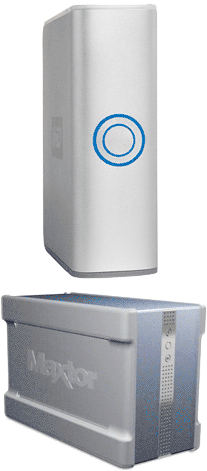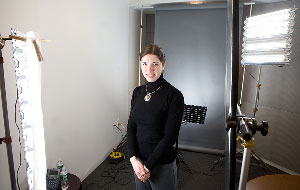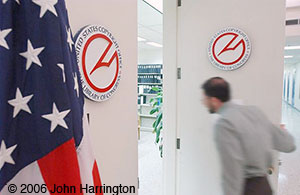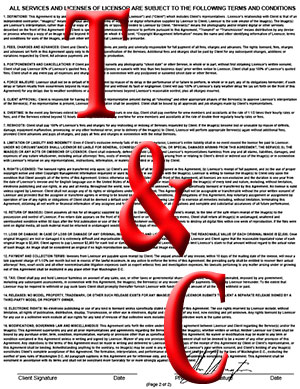 How much does 1 Terabyte of drive space cost? Do you care? You should! Let's do some math here:
How much does 1 Terabyte of drive space cost? Do you care? You should! Let's do some math here:
A D2x NEF is about 10MB, a 1Ds Mark II CR2 is about 19MB. 1TB will store about 10,000 NEF files, and just over 5,000 CR2's. For the D200's and 30D's, it returns to about 10,000 files. Now, go look at your camera. They all increment their filenames, rolling over at 9999 to 0000 again. Meaning, you should go and look to see how many images you've made to date. For me, I've rolled past 9999 multiple times. Oh, you're not shooting raw? Don't be silly. Read this from The Luminous Landscape, or this on the Adobe site. Shooting RAW is what professionals do. Professionals who absolutely positively must have JPEG's immediately after the shutter closes should be shooting RAW+JPEG, and just accessing the JPEG's, and archiving it all after the fact. Keeping the RAW files gives you the fullest and most complete access to the image your camera captured.
Now, how much do you spend on portable hard drives? Let's use one of the cheaper examples out there. The Costco Maxtor 1TB is $600, and how about the new Costco Western Digital 1TB that is $400. Not bad, eh? Well, actually, there are a few concerns. One -- these drives aren't just a single drive, inside those boxes, are multiple drives, and there's been many problems that have rendered these multi-drive-in-one-box systems useless. Single drive enclosures for about 350GB usable space run about $200. Another problem? You're keeping them all in one place. Either your home, or your sister's place down the road. No big deal? Check this MSNBC article about how Katrina killed data storage, or perhaps it's lightning, as in this CNN piece, or perhaps this Business Week article about black outs and other Summertime risks to data will convince you.
There are two types of people in this world. Those that have had a hard drive fail, and those that will. If you're smart, you'll take action when you are the latter, or else you will get religion when you become the former. I promise. Back in May of 2006, the SBA issued this press release which cites "A University of Texas study reports that 43 percent of companies experiencing a catastrophic data loss never recover, and half of them go out of business within two years." Do you want to be in business after a data loss? Would you gamble 50/50 odds that you would be out of business if you had a drive fail?
Where am I going with all this? Well, realize that to be protected, you must be redundant, meaning DOUBLE whatever capacity you need, and double the cost.
Now, let's talk about all the "free online storage" services that are out there. Global Drive wants $6,800 for 100GB of space for a year. X Drive wants $120/year for 50GB. And, Amazon.com's storage solution S3 for other web providers who need space charges $0.15 per GB per month. That becomes $1,800 per year for 1TB, without any of the ease-of-use front end. And, ok, many of you might suggest the spaces that talk "free unlimited", but they have bandwidth caps, so it's near impossible to really put all that you want. How's that? Even if you have 750KB/sec as an upspeed, they purposefully limit their downspeed to under 200kb/sec, so you'll be forever uploading. FOREVER! ExtremeTech did a great job of reviewing six online storage services last week. Their conclusion? "If your files are very confidential, you should probably stay away...also...something to avoid if you're a serious digital photographer who has a large collection of multi-megabyte RAW files or if you store and want quick access...".
 Enter a secure and safe Photo Shelter. Today, they announced you could access 1TB of redundant storage for an annual fee of $1k. It would cost you more than that to just buy the drives, let alone have always-on-anywhere access to the files, stored on two coasts in redundant storage facilities! Don't need that much? For $600 a year, you can have 1/2 TB of redundant space. Sweet! Could it get any better? Yup.
Enter a secure and safe Photo Shelter. Today, they announced you could access 1TB of redundant storage for an annual fee of $1k. It would cost you more than that to just buy the drives, let alone have always-on-anywhere access to the files, stored on two coasts in redundant storage facilities! Don't need that much? For $600 a year, you can have 1/2 TB of redundant space. Sweet! Could it get any better? Yup.
Their press release tells it all - "Photographers with slow connections to the Internet, or those wishing to avoid the online uploading process entirely, can take advantage of PhotoShelter’s drive upload service. Ship a hard drive filled with images to PhotoShelter and the images will be deposited directly into their archive." DAMN, AIN'T THAT SWEET! Check this link for more details.
Correction/Update: Commenter DJ notes my math is off by a factor of 10, and that's 100,000 files, not 10,000. Thanks DJ! On another comment about the use of web-hosting companies at $400/yr. That's a good idea, the challenge is in the upload to them, redundancies, and you'd be surprised at how fast you can burn through 2.5TB of data transfer. Search engine spiders load your entire site frequently looking for changes, and that all counts against your transfer cap, and they don't have the ease-of-use front end that PS (or Digital Railroad, for that matter) has. -- John
Please post your comments by clicking the link below. If you've got questions, please pose them in our
Photo Business Forum Flickr Group Discussion Threads.
[More: Full Post and Comments]
 Enter me. To the right you'll see the standard setup (with my assistant Lauren standing in). Main light, kicker light, reflector, and backdrop illumination. This is such a workhorse setup, and one we do consistently around town that this kit is dedicated to doing so. These lights you'll see in detail and in use on my Flickr pool here, and to get to them directly, visit Rololight. It took about 30 minutes to set lights (leisurely), and in came our subject. Session 1 included her in one jacket/blouse combination, Session 2 with a different one.
Enter me. To the right you'll see the standard setup (with my assistant Lauren standing in). Main light, kicker light, reflector, and backdrop illumination. This is such a workhorse setup, and one we do consistently around town that this kit is dedicated to doing so. These lights you'll see in detail and in use on my Flickr pool here, and to get to them directly, visit Rololight. It took about 30 minutes to set lights (leisurely), and in came our subject. Session 1 included her in one jacket/blouse combination, Session 2 with a different one.  The finished lighting setup (again, with my assistant standing in) is to the right. Total time with camera active, about 15 minutes. Another 20 minutes on the laptop making selections, and the client's client, when I asked "Are you happy with these?" Responded -- "Yeah, that's so...professional! I don't look like I am bug-eyed, like in that other one you {pointing to my longtime client/friend} took that ended up in that newspaper!" I responded "I'm glad we could make these work for you. Thanks!"
The finished lighting setup (again, with my assistant standing in) is to the right. Total time with camera active, about 15 minutes. Another 20 minutes on the laptop making selections, and the client's client, when I asked "Are you happy with these?" Responded -- "Yeah, that's so...professional! I don't look like I am bug-eyed, like in that other one you {pointing to my longtime client/friend} took that ended up in that newspaper!" I responded "I'm glad we could make these work for you. Thanks!" How much does 1 Terabyte of drive space cost? Do you care? You should! Let's do some math here:
How much does 1 Terabyte of drive space cost? Do you care? You should! Let's do some math here: 
 Term #2: "2. FEES, CHARGES AND ADVANCES: Client and Client’s representatives are jointly and severally responsible for full payment of all fees, charges and advances. The rights licensed, fees, charges and advances set forth in this Agreement apply only to the original specification of the Services. Additional fees and charges shall be paid by Client for any subsequent changes, additions or variations requested by Client. All advance payments are due prior to production."
Term #2: "2. FEES, CHARGES AND ADVANCES: Client and Client’s representatives are jointly and severally responsible for full payment of all fees, charges and advances. The rights licensed, fees, charges and advances set forth in this Agreement apply only to the original specification of the Services. Additional fees and charges shall be paid by Client for any subsequent changes, additions or variations requested by Client. All advance payments are due prior to production." 